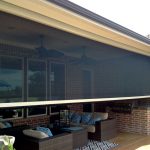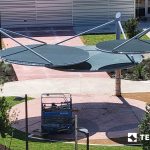The Benefits of Shade Structures in Public Parks
Public parks serve as gathering places for communities, offering opportunities for recreation, relaxation, and socialization. One key feature that enhances the usability and comfort of parks is the presence of shade structures. Let’s explore the numerous benefits that shade structures bring to public parks.
1. Sun Protection: One of the primary benefits of shade structures in public parks is sun protection. They offer a respite from the harsh rays of the sun, providing a shaded area where visitors can seek refuge and avoid overexposure to UV radiation.
2. Enhanced Comfort: Shade structures create comfortable outdoor spaces that encourage people to linger longer in the park. Whether it’s enjoying a picnic, reading a book, or simply taking a break from physical activity, visitors can relax and unwind in the shade.
3. Increased Park Usage: Parks with adequate shade are more likely to attract visitors, particularly during hot summer months. Families, children, and seniors are more inclined to visit parks that offer shaded areas where they can stay cool and comfortable.
4. Protection of Park Amenities: Shade structures help protect park amenities such as playground equipment, picnic tables, and benches from sun damage and deterioration. By providing shade, these structures extend the lifespan of park assets, reducing maintenance costs over time.
5. Community Gathering Spaces: Shaded areas within parks serve as natural gathering spaces for community events, picnics, and celebrations. They facilitate social interaction and strengthen community bonds by providing a comfortable environment for people to come together.
6. Promotion of Outdoor Fitness: Shaded areas encourage outdoor fitness activities such as yoga, tai chi, and group exercise classes. With protection from the sun, visitors are more likely to engage in physical activity, leading to improved health and well-being.
In conclusion, shade structures play a vital role in enhancing the functionality, comfort, and appeal of public parks. By providing sun protection, increasing park usage, protecting amenities, fostering community gatherings, and promoting outdoor fitness, these structures contribute to the overall quality of life in communities.







